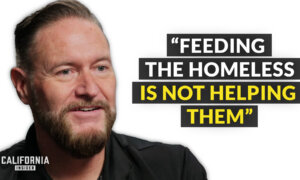As teens spend increasingly more time online, consuming video content that can alternately educate, entertain, manipulate, and potentially harm, the American Psychological Association (APA) has issued its first comprehensive guideline to help parents, educators, and tech companies navigate this complex digital terrain.
“Research consistently shows that video content, and the platforms that host it, have the potential to help or harm teens,” APA CEO Arthur C. Evans Jr. stated in a press release.
“It is the shared responsibility of video platforms, content creators, parents, caregivers, educators, policymakers and the technology industry to create an environment where youth can learn and express themselves safely online.”
Overview of APA Recommendations
The APA has released its first set of
recommendations for healthy teen video viewing, summarizing existing scientific research on adolescents’ viewing habits. The guideline provides actionable steps for parents, youth, and educators and recommendations for policymakers and technology professionals.
Mitch Prinstein, APA’s chief science officer who has a doctorate in clinical psychology, told The Epoch Times via email that given how rapidly video content has multiplied and how little of it has been reviewed these days to ensure child safety, “this was an important area of science to review and pass along to help kids and families.”
Key to the APA’s recommendations is educating adolescents to be more selective about the content they consume. The report highlights positive aspects of online videos, such as assistance with homework, teaching new skills or hobbies, and providing insight into different cultures and experiences.
However, the report also identifies negative aspects of teen online video access. It suggests that adolescents who are more emotionally sensitive or anxious may experience distress when viewing intense content. Likewise, kids with body image concerns or disordered eating patterns are more likely to find content encouraging unhealthy physical ideals suggestive.
“The effects of negative content can be buffered if followed by discussion with adults to help teens understand what was viewed, engage in comparisons between video content and family values/preferences, and consider problem-solving or coping strategies that teens could use for experiences similar to what they viewed on screen,” the authors wrote.
Recommendations to Minimize Risks
To mitigate the risks associated with online video consumption, the APA emphasizes the importance of incorporating video literacy into school curriculums. By doing so, teens can grow their knowledge and resist the manipulative features of video platforms designed to extend engagement.
“Most of what teens are viewing these days has not been checked over to make sure it is ok for teens,” Prinstein said. He pointed out that studies show some of this content, “like joyful content, or stories about teen relationships,” may be helpful for kids.
“But other content, such as dangerous, illegal, hateful behavior, may cause harm,” Prinstein wrote in an email. “It is crucial that policy makers, content creators, tech platforms, as well as teachers, parents, and kids have the info they need to keep teens safe!”
The APA report also urges tech companies to modify platform features that can adversely affect adolescent well-being.
Platforms that rely on content recommendations, rapid transitions between short-form videos, and autoplay features may increase exposure to harmful content and promote maladaptive viewing habits among youth, according to the APA.
Additional recommendations from the report include the following:
- If a video shows dangerous stunts or promotes harmful behavior, help your teen understand why watching or copying these actions is not OK. Teach them to recognize content that could be unsafe.
- When teens watch health videos, help them understand not all creators are experts. Show them how to spot reliable health information from qualified professionals like doctors or registered health experts.
- Look for videos that teach positive communication, respect, empathy, and healthy ways of interacting with others. These can help teens develop good social skills and understand healthy relationships.
- Set clear guidelines about screen time. Make sure video watching doesn’t replace getting enough sleep, exercising, and spending time with family and friends.
Recognizing Diverse Youth Experiences
The report’s authors acknowledge that these recommendations may not apply equally to all youth, as adolescents develop at different rates. Furthermore, they note a lack of research focused on teens with disabilities and mental health conditions and those from minoritized racial, ethnic, sexual, or gender identities.
Parents and caregivers are encouraged to help adolescents minimize risks by establishing clear expectations, rules, and limitations regarding video viewing and engaging in supportive discussions about content.
“Given the amount of time youth spend online and the importance of autonomy to adolescent decision making and development, it is not possible for parents to monitor everything their children watch online,” Evans stated in the press release. “We hope these recommendations will motivate regulators, policymakers and tech companies to take meaningful steps to safeguard adolescents from harmful content and platform features that promote overuse.”
In response to the growing screen use problem, some parents have started intervening and delaying their children from having a phone until they’re in 8th grade—a movement known as Wait Until 8th.
It is crucial that household rules and agreements regarding cellphone use are in place and that those guidelines apply to the whole family, including parents, Dr. Vera Feuer, a New York state-based Northwell Health physician specializing in child and adolescent psychiatry, told The Epoch Times













